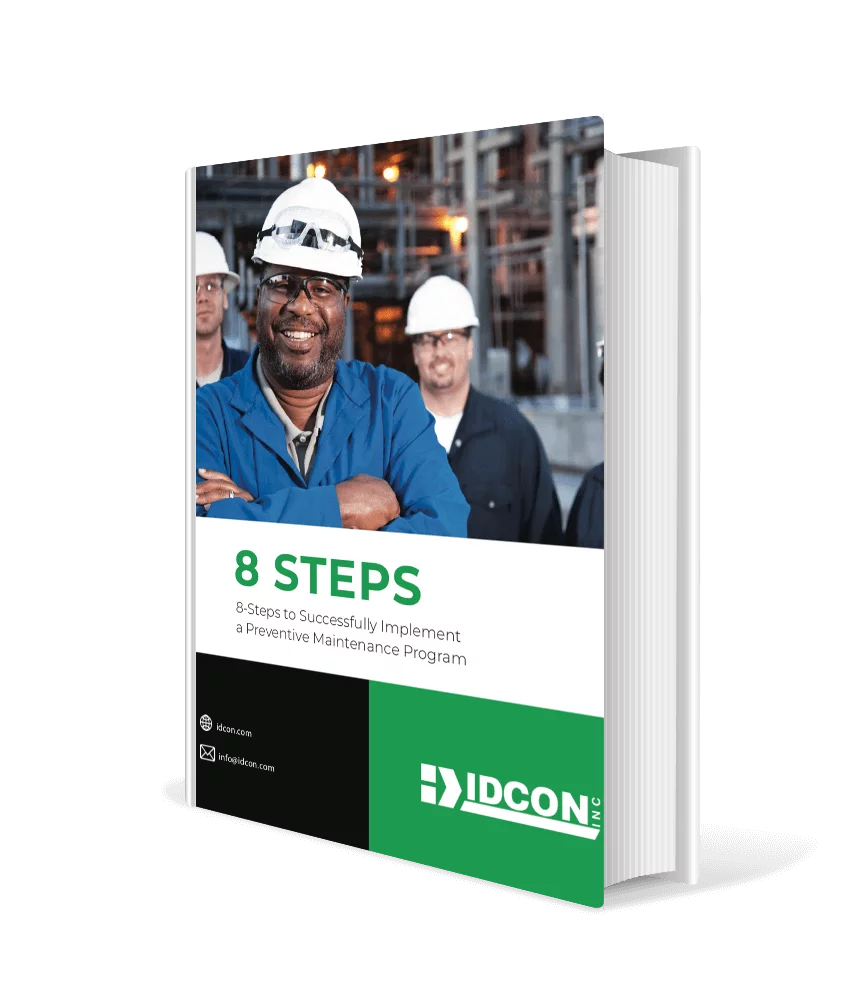The cost of maintaining the status quo is enormous.
The status quo affects each and every one of us every hour of every day, at work and at home. We have come to accept doing nothing as a safe and acceptable alternative. We even make it the default solution.
Doing nothing is the management equivalent of a baby’s soother.
It makes us feel safe and comfortable.
But for preventive maintenance, there is a cost: the cost of doing nothing.
Economists and accountants frequently refer it as “opportunity cost;” what you could do yourself with your resources if you were not doing what you are doing right now.
In this article, we will examine this concept, provide common applications, look at why and where the cost of doing nothing is most commonly concealed, and finally, what we can do to change.
EVERY DAY CASES
Working in a plant you see “the cost of doing nothing” many times every day, though you may not always recognize it.
Those all too common process upsets are caused by a faulty loop:
- that operator who does not clean up when the machines runs well
- the supervisor looking the other way when people play pinball on the control room computer during the swing shift
- and not inspecting the air hoses for wear regularly knowing that they may fail— probably when you really need it.
All those things contribute to a mediocre reliability performance and are thus part of “the cost of doing nothing”.
PREVENTIVE MAINTENANCE
As maintenance consultants, we see first hand how people ignore “the cost of doing nothing.”
One area that stands out is preventive maintenance.
If you find and fix things before you are forced to do so, your returns are typically 3-10 times your original investment.
If you just get returns at the lower end of this range on your 401K, your initial $10,000 investment would become $12,960,000 in just 5 years, with no further contribution.
A Canadian plant discovered this the hard way when a preventive maintenance inspection revealed that its lime kiln’s lining had been damaged. The cost to reline it would be C$ 60,000.
Due to the usual production related pressures, management procrastinated on repairs.
Since nothing really happened and no one wanted to take the unpopular decision of delaying production and shipments, they continued to procrastinate, secretly hoping to make it to the next shutdown.
However, the lining did not procrastinate and failed, forcing repairs costing C$ 500,000.
This is, unfortunately, a very common problem in North American plants.
Most of the incidents by themselves are small enough not to attract much attention. However, if you ask maintenance people at your plant, you will find that everyone has their favorite stories about “the cost of doing nothing.”
LEAKING UTILITIES
Another good example is utility leaks. Steam, water, and instrument air systems all leak over time. Most of us walk past many utility leaks every day without raising an eyebrow.
As you can see from Figure 1, even a small (1/8” diameter) leak in a steam system left un-repaired can cost you a bundle.
For one faulty steam trap (say it’s stuck open), “the cost of doing nothing” can be US$ 2000 per year.
It is not uncommon for plants to have combined utility leaks in these systems where “the cost of doing nothing” amounts to US$ 10,000 per month. Remember that the leaks are only part of “the cost of doing nothing.”
Secondary costs, such as the need to expand capacity of the utility system to make up for leaks and potential downtime and quality losses should be added.
PLANNING AND SCHEDULING
Another area where examples of “the cost of doing nothing” are bountiful is planning and scheduling. In a well functioning planning and scheduling system, all people involved follow a set of predefined actions or processes that interact with each other to drive the results.
These outcomes are principally efficiencies, repeatability, predictability, and reduced costs. It is essential to fine-tune these actions and keep repeating them, each time producing a small improvement or saving.
Thus, each time the actions are omitted or executed poorly, the saving or efficiency will fail to materialize, becoming “the cost of doing nothing.”
A prominent example of this is the creation and use of standard job plans. The standard job plan is a detailed plan on how to execute a certain job such as motor or pump replacement or overhaul.
The first time you do any job you can reasonably expect to do again, you create a detailed, efficient work plan with breakdown of job steps and crafts, drawings, special tools, tolerances, lock out procedures, etc. This plan becomes the standard or template for how this job is best done.
The next time this job comes up, you take your template and make small modifications to allow for model differences, environmental conditions, etc. With a small effort you have created a comprehensive, efficient job plan. Each time a job is done the template is improved and you build a database of plans and empirical knowledge.
For each job done without taking the time to create this standard job plan, you incur “the cost of doing nothing.”
Another common example of efficient practices in planning and scheduling is the use of the bill of material feature for equipment.
Without this feature, planners cannot plan efficiently as they cannot determine what parts are inside a piece of equipment without dismantling it. In a normal plant, this feature will be used many times each day to assist with planning for and ordering parts.
Yet we see many plants that have been operating for 30-50 years that still do not have adequate bills of material. This wastes time and incurs “the cost of doing nothing” each time a job is, or could be, planned or a part is ordered.
A similar argument can also be made for labeling equipment location numbers in the field.
WHY, WHY, WHY?
Since calculating the cost of doing nothing is not exactly rocket science, why do so few people consider it in their daily work? There are several reasons—mostly cultural—including risk aversion, cost cutting focus, organizational fatigue, scapegoat thinking, and plain ignorance. Let’s look at each briefly.
Risk Aversion
If an organization is risk averse, managers typically tow the line and don’t ask questions. Since most change is seen as riskier than the status quo, this condition tends to become a self-fulfilling prophecy.
As risk taking is scorned, managers will not submit improvement proposals associated with risks. The status quo rules supreme.
Focus on Cost Cutting Over Results
This is a classic malaise. This condition is typically fostered by an ill-informed chief executive or by financial people with undue influence. Regardless of how it starts, cost cutting seems to reinforce itself.
Many organizations become so obsessed with cost cutting that it becomes a cure-all for problems great and small. In this environment, no employee with a mortgage will submit ideas that require the company to spend cold cash to make “possible” savings.
Organizational Fatigue
This is an organizational condition characterized by overtaxed employees laboring under unreasonable expectations.
It is created when several rounds of cost cutting reduce headcount without a commensurate change in the amount of work to be done. People in this environment typically feel overwhelmed with their workload.
Although they understand and want to support improvements, employees are overwhelmed or lack the energy to participate.
Scapegoat Thinking
Scapegoat thinking is the act of irrationally and often arbitrarily holding a person, or group of people, responsible for a problem. This is a common American organizational condition that flourishes in “top-down” organizations.
It is commonly expressed in loss reporting—an explosive issue at most plants. The main rationale supporting this condition is that once you have found, fired or reprimanded the person, group, or department seen as closest to a mistake, you have solved the problem.
An unintended and rarely appreciated consequence is that people do not want to be even remotely associated with failure or even the risk of failure. This organizational condition naturally leads to severe risk aversion, as described above.
Ignorance
Every so often we come across organizations where people in charge simply do not understand that they can do better.
Sometimes this condition is perpetuated or aggravated by “professional courtesy” from other managers. In such cases, other managers lack knowledge of the area in need of improvement.
They also mistakenly assume that the manager in charge of that area is a professional and knows what he or she is doing.
Corrective action in this situation will typically either be greeted with enthusiasm and quick progress or will never happen, depending upon whether or not the manager in question understands and acknowledges their shortcomings when confronted.
WHAT WE CAN DO
With a problem so ignored and so widespread, can we really do anything about it or are we just whistling in the wind? After all, “doing nothing” is a long standing practice at many plants.
Procrastination is the dominant management style for a disturbingly large number of people and organizations.
I still remain optimistic.
Once people have had a chance to vent their frustrations over old practices and transgressions, we can to put the past behind us and agree that tomorrow is a brand new day.
As for so many other persistent problems, the solutions exist and are surprisingly easy to implement.
For each new project proposed, make a rule that the cost of doing nothing be quantified and considered. This accounting will not be totally complete, but once “the cost of doing nothing” is established as a factor, people become more comfortable at approximating and considering it.
You will be surprised how easy it is and how good you will feel once you get started. Your job and your future may depend upon it.
As the old adage goes, “If you keep doing what you always have done, you will always get the results you always have got.”
If we do not do anything different, reading this article has just been added to “the cost of doing nothing”—so let us remember that “the cost of doing nothing” is something very large and imposing.
Figure 1: Monthly leak cost for steam. Calculations based on a steam pressure of 160 PSI. Typical cost of steam is US$ 2-6/1000 lbs using recycled or waste products fuel. Coming soon!
Figure 2: A simple standard job template showing the important job steps and craft needed for each. Template courtesy of “Result Oriented Maintenance, Information for Today’s Manager,” IDCON Inc., 1995.





